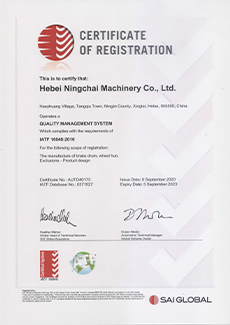
-
 Afrikaans
Afrikaans -
 Albanian
Albanian -
 Amharic
Amharic -
 Arabic
Arabic -
 Armenian
Armenian -
 Azerbaijani
Azerbaijani -
 Basque
Basque -
 Belarusian
Belarusian -
 Bengali
Bengali -
 Bosnian
Bosnian -
 Bulgarian
Bulgarian -
 Catalan
Catalan -
 Cebuano
Cebuano -
 Corsican
Corsican -
 Croatian
Croatian -
 Czech
Czech -
 Danish
Danish -
 Dutch
Dutch -
 English
English -
 Esperanto
Esperanto -
 Estonian
Estonian -
 Finnish
Finnish -
 French
French -
 Frisian
Frisian -
 Galician
Galician -
 Georgian
Georgian -
 German
German -
 Greek
Greek -
 Gujarati
Gujarati -
 Haitian Creole
Haitian Creole -
 hausa
hausa -
 hawaiian
hawaiian -
 Hebrew
Hebrew -
 Hindi
Hindi -
 Miao
Miao -
 Hungarian
Hungarian -
 Icelandic
Icelandic -
 igbo
igbo -
 Indonesian
Indonesian -
 irish
irish -
 Italian
Italian -
 Japanese
Japanese -
 Javanese
Javanese -
 Kannada
Kannada -
 kazakh
kazakh -
 Khmer
Khmer -
 Rwandese
Rwandese -
 Korean
Korean -
 Kurdish
Kurdish -
 Kyrgyz
Kyrgyz -
 Lao
Lao -
 Latin
Latin -
 Latvian
Latvian -
 Lithuanian
Lithuanian -
 Luxembourgish
Luxembourgish -
 Macedonian
Macedonian -
 Malgashi
Malgashi -
 Malay
Malay -
 Malayalam
Malayalam -
 Maltese
Maltese -
 Maori
Maori -
 Marathi
Marathi -
 Mongolian
Mongolian -
 Myanmar
Myanmar -
 Nepali
Nepali -
 Norwegian
Norwegian -
 Norwegian
Norwegian -
 Occitan
Occitan -
 Pashto
Pashto -
 Persian
Persian -
 Polish
Polish -
 Portuguese
Portuguese -
 Punjabi
Punjabi -
 Romanian
Romanian -
 Russian
Russian -
 Samoan
Samoan -
 Scottish Gaelic
Scottish Gaelic -
 Serbian
Serbian -
 Sesotho
Sesotho -
 Shona
Shona -
 Sindhi
Sindhi -
 Sinhala
Sinhala -
 Slovak
Slovak -
 Slovenian
Slovenian -
 Somali
Somali -
 Spanish
Spanish -
 Sundanese
Sundanese -
 Swahili
Swahili -
 Swedish
Swedish -
 Tagalog
Tagalog -
 Tajik
Tajik -
 Tamil
Tamil -
 Tatar
Tatar -
 Telugu
Telugu -
 Thai
Thai -
 Turkish
Turkish -
 Turkmen
Turkmen -
 Ukrainian
Ukrainian -
 Urdu
Urdu -
 Uighur
Uighur -
 Uzbek
Uzbek -
 Vietnamese
Vietnamese -
 Welsh
Welsh -
 Bantu
Bantu -
 Yiddish
Yiddish -
 Yoruba
Yoruba -
 Zulu
Zulu
how to remove a seized brake drum
How to Remove a Seized Brake Drum
Removing a seized brake drum can be a frustrating task for any DIY mechanic, but with the right tools and techniques, it can be accomplished safely and efficiently. A seized brake drum is commonly caused by rust, corrosion, or overheating, which can bond the drum to the wheel hub. Here’s a step-by-step guide to help you through the process.
Tools and Materials Needed
Before you begin, make sure you have the following tools and materials on hand
- Jack and jack stands - Lug wrench - Brake drum puller - Hammer - Penetrating oil (like WD-40) - Screwdriver or pry bar - Safety goggles and gloves
Step 1 Prepare the Vehicle
1. Safety First Ensure the vehicle is parked on a flat, stable surface. Engage the parking brake and put on safety goggles and gloves to protect yourself. 2. Loosen the Lug Nuts Using a lug wrench, slightly loosen the lug nuts on the wheel with the seized brake drum. Do not remove them completely just yet.
3. Lift the Vehicle Use the jack to lift the vehicle and place jack stands securely under the vehicle to prevent it from falling.
4. Remove the Wheel Now, remove the loosened lug nuts completely and take the wheel off to expose the brake drum.
Step 2 Inspect the Brake Drum
Inspect the brake drum for signs of rust or corrosion. If it appears to be severely rusted, applying penetrating oil can help free it up. Spray the penetrating oil around the edges of the brake drum where it meets the hub, allowing it to soak in for at least 10-15 minutes.
Step 3 Try Tapping the Drum
how to remove a seized brake drum

1. Use a Hammer If the drum remains stuck, take a hammer and gently tap around the circumference of the drum. This vibration can help break the bond between the drum and the hub. Be gentle to avoid damaging the drum.
2. Check Again After tapping the drum, attempt to pull it off again. If it still doesn’t budge, you may need to employ more force.
Step 4 Utilize a Brake Drum Puller
If manual methods fail, it's time to use a brake drum puller. A brake drum puller is a specialized tool designed to remove seized brake drums efficiently.
1. Position the Puller Attach the brake drum puller to the drum’s holes, ensuring that it is securely fastened.
2. Adjust and Tighten Turn the center screw of the puller to apply pressure to the drum. The puller will gradually apply force to pull the drum off.
3. Remove the Drum As the puller applies force, the drum should begin to break free from the hub. Once it loosens, you can remove it completely.
Step 5 Clean and Lubricate
Once the drum is removed, inspect the brake components for wear and replace any parts as necessary. Clean the mating surfaces of the drum and the hub to remove any rust or debris, and apply a thin layer of anti-seize lubricant to the hub where the drum sits. This will help prevent future seizing.
Conclusion
Removing a seized brake drum may be challenging, but by following these steps, you can tackle the problem effectively. Always prioritize safety and take your time throughout the process. If you find that the drum is still unyielding or you feel uncomfortable with the procedure, seeking professional assistance is a wise decision. With the right approach, you can successfully remove a seized brake drum and ensure your vehicle’s braking system functions properly.
-
What Are Drum BrakesNewsJul.07,2025
-
Understanding Brake Drum MaterialNewsJul.07,2025
-
Semi-Trailer Brake Drum: A Key Component for Extreme Loads and Long-Distance TransportNewsJul.07,2025
-
Drum Brake Pads for SaleNewsJul.07,2025
-
Brake Drums for SaleNewsJul.07,2025
-
Brake Drum ManufacturerNewsJul.07,2025
-
Aluminum Brake Drums: The Future of High-Performance CarsNewsJul.07,2025
